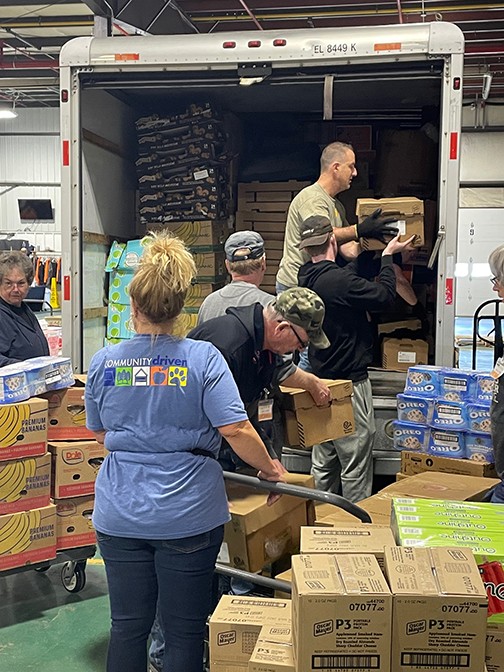Midwest Food Bank's role in food rescue
For the first time in history, enough food is produced to feed everyone. Globally, farmers are growing over 22 billion pounds of produce every day, enough to provide every person on the planet almost twice, according to the Farm Link Project. It's not about having enough food; it's about getting the roughly 30-40% of the wasted US food supply into the hands of people who need it.
Why does food need to be rescued?
The waste happens because there is a surplus or it can't get to retail stores in time. Waste also occurs at grocery stores and restaurants. Midwest Food Bank is about taking that food waste, which is healthy and safe food, and putting it to good use.
MFB rescues some of that food before it arrives at the landfill and distributes it through our food partners, feeding programs, and pantries. That takes the waste and makes it the solution to alleviating hunger and malnutrition. We like to think it's about driving that truck of food in the right direction.
MFBs food rescue efforts
One of the most common questions asked when someone sees the size and scope of our operations is, "Where does all this food come from?" Midwest Food Bank receives donated food from multiple sources nationwide: food manufacturers and distribution centers, nonprofit partners, USDA programs, grocery stores, and private food drives.
Much of this food is surplus or cannot move through a manufacturer's supply chain in time to reach the consumer. If MFB didn't take this food, it would often go directly to landfills. This is part of the explanation of the 30-40% of food waste in the United States.
We want to be wise stewards of our available resources, and rescuing food is one way MFB does that. We want to capture this safe and healthy food and get it to people that need it. Midwest Food Bank has a fleet of trucks and a pool of volunteers that rescue food and bring it into our warehouses.
Food rescue is good for the planet
When MFB helps people, we are also helping the planet. We find and collect food that would otherwise go to waste and re-routes it to people that need it. In the United States, food is the single largest category in municipal landfills, according to the FDA.
Midwest Food Bank believes it is wise to use resources to divert some of the 30-40% of food waste in the United States away from landfills and to feeding programs, food pantries, and our food partners. This is safe, healthy, and nutritious food that MFB rescues and uses to alleviate hunger and malnutrition in our communities.
When food waste is curbed, it also means the resources that were used to produce that food aren't wasted, too. It takes land, water, labor, energy, and transportation to get food into the supply chain.
MFB strives to be good stewards of our resources - the time of our volunteers, the food we rescue, and the world we live in. Click here to read more about the Midwest Food Bank Mission and Vision
Sources: The Global Food Banking Network; United Nations; Farm Link Project, FDA, USDA
When you subscribe to the blog, we will send you an e-mail when there are new updates on the site so you wouldn't miss them.




